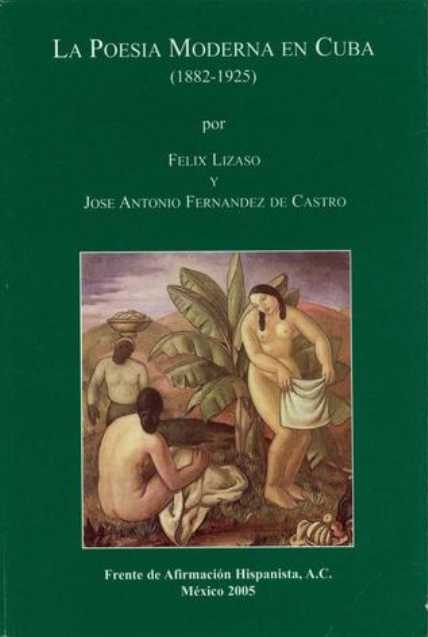4.1.1.23 “Modern Poetry in Cuba” and the “Los Nuevos” group, 1926

In 1926, an anthology was published entitled “Modern Poetry in Cuba,” edited by Félix Lizaso and José Antonio Fernández de Castro. The term “The New” is used to describe the selected authors and the aesthetic principles they shared, even though they did not really share a common foundation.
Most of the poets included in this exhibition had begun their creative work in the 1920s, working within a poetics inscribed within the remnants of modernism and postmodernism, yet lacking the concerns that would allow them to glimpse the emergence of the avant-garde in the Cuban lyrical scene. Some were followers of Boti and generally shared a desolate worldview that seemed consonant with Casal’s emotional universe.
Among the names included in the exhibition are Ramón Rubiera, Eduardo Avilés Ramírez, Enrique Serpa, Rafael Esténger, Andres Nuñez Olano, and Enrique Loynaz. To a greater or lesser extent, they embraced conservative poetics, anchored in a literary movement that had already exhausted its expressive possibilities, at least for such an assumption.
The work of Ramón Rubiera, for example, reiterates similar topics to those of Boti, now devoid of the innovative impetus that the poet had given it at the time. Before, in 1925, he had published “Los astros ilusorios”, his only published collection of poems, also heir to Povedian lyricism but without its vigor.
A poem by Enrique Loynaz serves to illustrate the direction in which these proposals moved:
“Among the lilies, I could not
say what my beloved’s body is.
When she goes down to bathe alone
in the morning,
and the air is clear,
and the water is full of lilies,
no one can say
what is the body of my beloved.
Her hair seems to vaguely whiten,
their white hands are whiter,
Like wine-stained lilies, they are whiter!
and even his red mouth looks white.
His eyes are white
like her eyelashes.
Her feet are soft as milk, they melt
little by little in the water,
her shoulders disappear and then her breasts,
his arms lengthen, soften
strangely, as
if they were two silver ribbons;
and her skin then seems to be made of lily water,
of a glimmer of water.”
In general, a restricted conception of poetry prevailed, both in terms of content and vocabulary, inherited from Romanticism and Modernism but without reaching the heights of other authors.
However, some of the poets were already pointing towards the avant-garde in their casual treatment of themes and the so-called sentimental irony, as is the case of María Villar Buceta, José Z. Tallet and Rubén Martínez Villena, who were already at a point of rupture with respect to the hackneyed poetic formulas that had been prevailing after the innovative impulse of Boti and Poveda.








